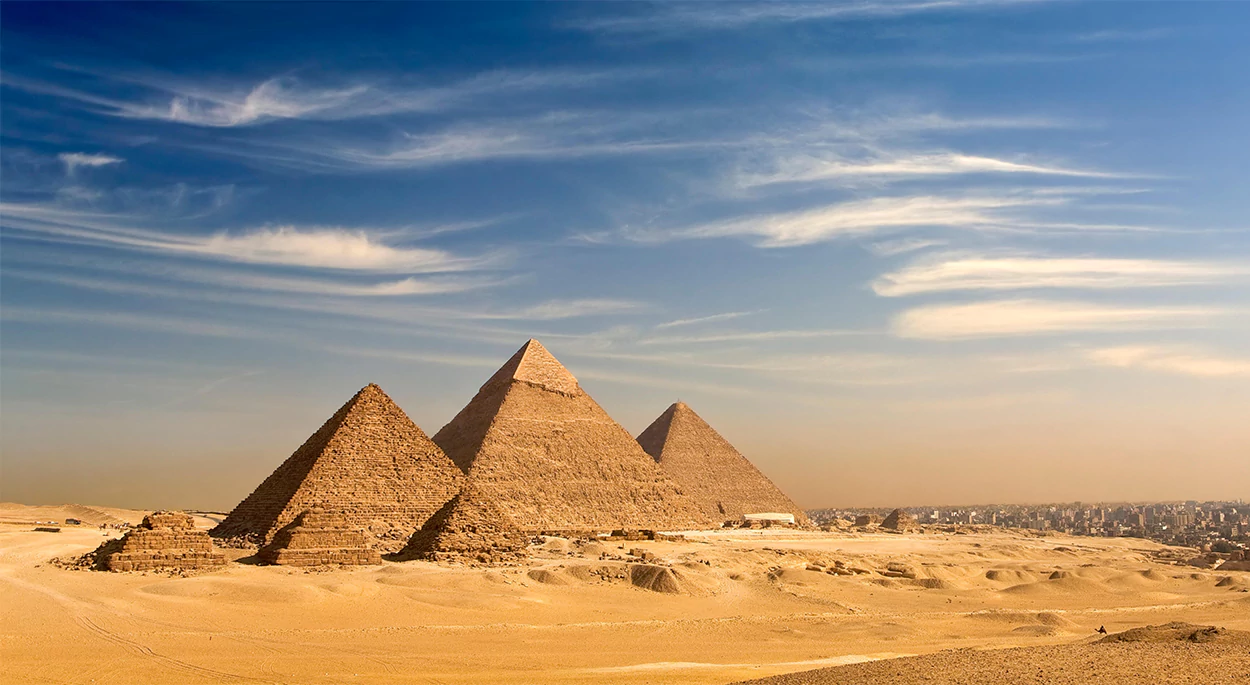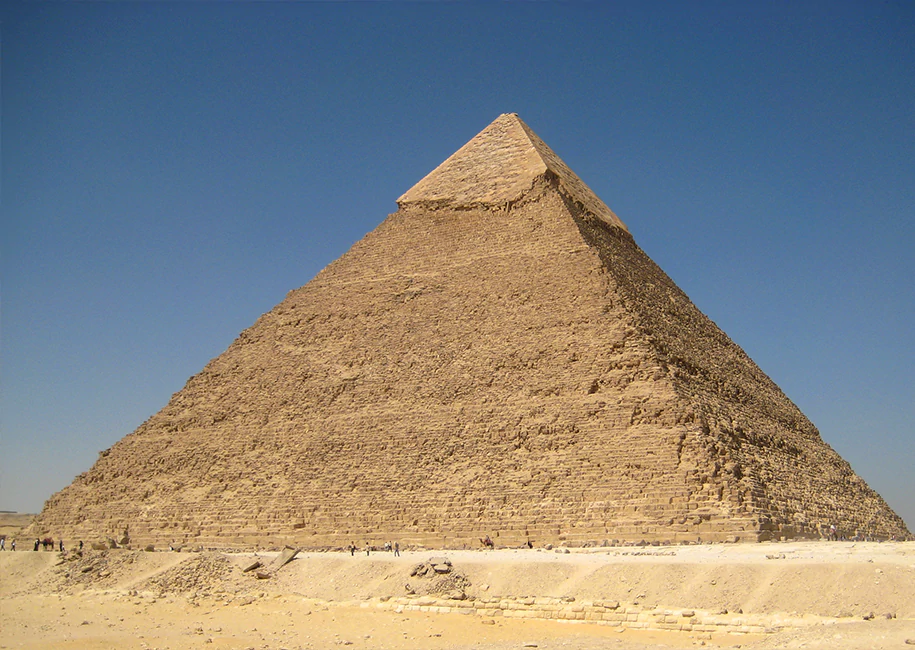
The Great Pyramid of Giza is considered as the last and remaining ancient Seven Wonders of the World and Egypt’s most famous landmark. It is situated on the Giza plateau near the modern city of Cairo. The Giza Plateau is located on the western bank of the Nile River and is approximately 8 kilometers (5 miles) southwest of the city center of Cairo. The pyramids were built as tombs for the pharaohs and served as monuments to their power and divine authority. It was designated as a UNESCO World Heritage site in 1979, along with Saqqara, Dashur and Abu Rawash.
The placement of the pyramids – Khufu, Khafre and Menkaure correspond to the kings for whom they were built. Pharaoh Khufu also known as king Cheops of the 4th dynasty was the first Egyptian king to build a pyramid in Giza. He initiated it around 2550 B.C and it was built over a twenty-year period during his reign. His Great Pyramid is the largest in Giza and originally towered some 481 feet above the plateau.

Khufu’s son, king Khafre (also known as Chephren), built the second pyramids at Giza, circa 2520 B.C. His necropolis or burial ground, stands out on the landscape because it also includes the Sphinx, a limestone monument with the body of a lion and the head of a pharaoh. The Sphinx is thought to have been carved out of a single limestone outcrop in conjunction with the construction of Khafre's pyramid complex, serving as a guardian or protective god for the tomb.
The smallest of the three main pyramids at Giza is the Pyramids of Menkaure, also known as the Pyramid of Mykerinos. It is located in the southwest of the Great Pyramid of Khufu and the Pyramid of Khafre. Menkaure’s reign is estimated to have been around 2532-2504 B.C. While it is not as large as the other pyramids, Menkaure’s pyramid is still an impressive monument, standing at approximately 213 feet in height.

The pyramids are primarily made of limestone blocks. These limestone blocks were quarried from the nearby sources and transported to the construction site. The limestone blocks formed the core structure of the pyramids. While the exact methods are not fully known how the pyramids were built. Historians, and archaeologist have several theories based on the gathered evidences through excavations, ancient texts and modern scientific studies such as quarrying, transportation of massive blocks with use of sledges, wooden rollers, water and/or mud, using ramps as construction techniques, using zigzagging ramps that spiraled around the pyramids.
Inside the Great Pyramid of Giza, there are several chambers and passages including; the Ascending passage – the passage that begins in the entrance of the north side of the pyramid and leads upward at an angle of about 26 degrees. the Grand Gallery –an impressive corridor of about 26 feet high and 151 feet long, located one-third way up the Ascending Passage. It features a corbelled ceiling composed of seven layers of blocks. the Antechamber – located at the top of the Grand Gallery is a small chamber which serves as a transition point between the Grand Gallery and the King’s Chamber, the King’s Chamber – A rectangular chamber that is constructed entirely of red granite, including its walls, ceiling and sarcophagus or the stone coffin. It is located at the center of the pyramid, the Queen’s Chamber –A smaller chamber located beneath the King’s Chamber. It serves as a symbolic or ritualistic purpose. Lastly, the Subterranean Chamber – it is an unfinished chamber located in the ground level below. The purpose of the chamber is not entirely clear, but it is believed to have been part of the original construction phase.
Overall, the Great Pyramids of Giza is still the most magnificent man-made structures created in history, which reflects Egypt’s rich and glorious past. It continues to inspire and fascinate people from all over the world to this day.